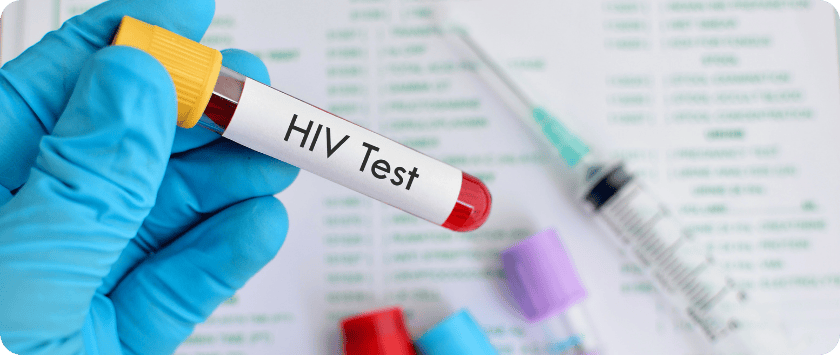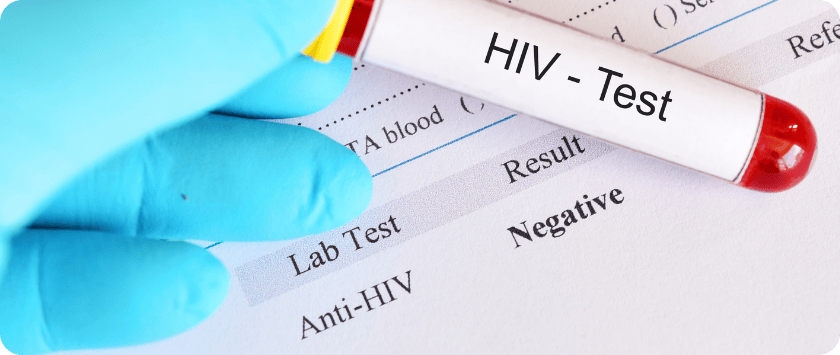What You Should Know About HIV Testing
Getting tested for HIV is the first step toward truly taking care of yourself. Once you know your HIV status, you’re ready to make the best decisions for your health.
Should I Get Tested for HIV?
The Thai Red Cross AIDS Research Centre recommends that everyone between the ages of 13 and 64 get tested for HIV at least once in their lifetime.
However, if you have certain behaviors or risk factors, you should get tested more frequently — especially if you:
- Are a man who has sex with men
- Have had anal or vaginal sex with someone who is living with HIV
- Have had multiple sexual partners since your last HIV test
- Have shared needles, syringes, or other injection equipment
- Have exchanged sex for drugs or money
- Have been diagnosed with or treated for a sexually transmitted infection (STI)
- Have been diagnosed with or treated for hepatitis or tuberculosis
- Have had sex with someone who engages in any of the above behaviors or whose sexual history you don’t know
Before having sex with a new partner for the first time, it’s important to have an open conversation about your sexual histories, drug use (if any), and HIV status. Ideally, consider getting tested for HIV together to build trust and start your relationship safely.

Types of HIV Tests and How They Work
There are three main types of HIV tests, each with its own method and advantages:
1.Antibody Test This test detects antibodies, which are proteins the body produces in response to HIV infection.- Samples are typically taken from blood or oral fluid.
- FDA-approved HIV self-test kits are generally antibody tests.
- Blood collected from a vein tends to be more accurate and can detect HIV earlier than finger-prick or oral fluid tests.
- Commonly used in clinical laboratories.
- Requires a blood sample from a vein, though some rapid versions can use finger-prick blood.
- Detects HIV earlier than antibody-only tests.
- Requires a venous blood draw and is processed in a laboratory.
- Can determine if a person is infected and measure the amount of virus (viral load) in the blood.
- Detects HIV the earliest among all testing methods.
Recommended for individuals who recently had a high-risk exposure, show early symptoms of HIV, or received a negative result from other tests but may still be at risk.

What Does a Negative HIV Test Result Mean?
A negative result doesn’t always mean you are “HIV-free.” This may be due to the window period—the time between being exposed to HIV and when a test can reliably detect the virus.
If you took an HIV test after a possible exposure and received a negative result:
- You should get tested again after the window period, depending on the type of test you took (e.g., 2–4 weeks for a NAT, or 3 months for an antibody test).
- If you retest after the window period, have had no additional risks, and still receive a negative result, it means you do not have HIV.
However, if you are continuously at risk, such as:
- Having unprotected sex
- Sharing needles or injection equipment
You should:
- Get tested for HIV at least twice a year
- Consider taking PrEP or other HIV prevention methods to stay protected
What Does a Positive HIV Test Result Mean?
If you receive a positive result from any type of HIV test, you will need to undergo a follow-up (confirmatory) test to verify the result. Here are some possible scenarios:
- If you used an HIV self-test or tested through a community-based program and received a positive result → You should visit a healthcare provider or clinic for confirmatory testing.
- If you were tested at a hospital or medical laboratory, and the initial screening result is positive → The lab will automatically perform a confirmatory test using the same blood sample. If the confirmatory result is also positive, it means you are living with HIV.
Confirmatory testing is extremely important because false positives can occur in some cases. So don’t jump to conclusions based on a single test result.
It’s essential to enter into HIV care and treatment as soon as possible to ensure the best long-term health outcomes.
